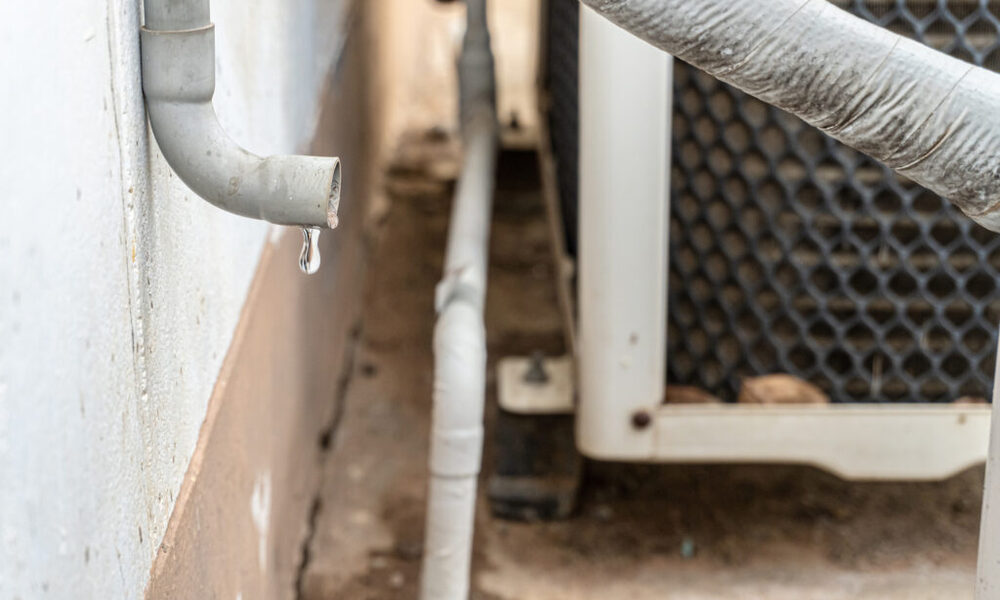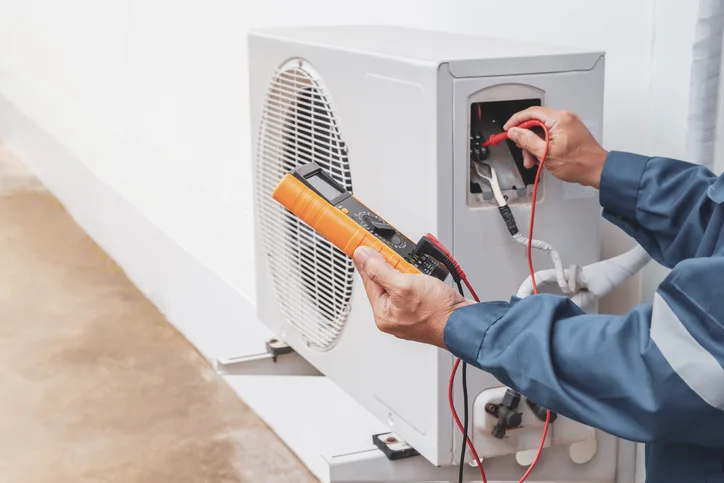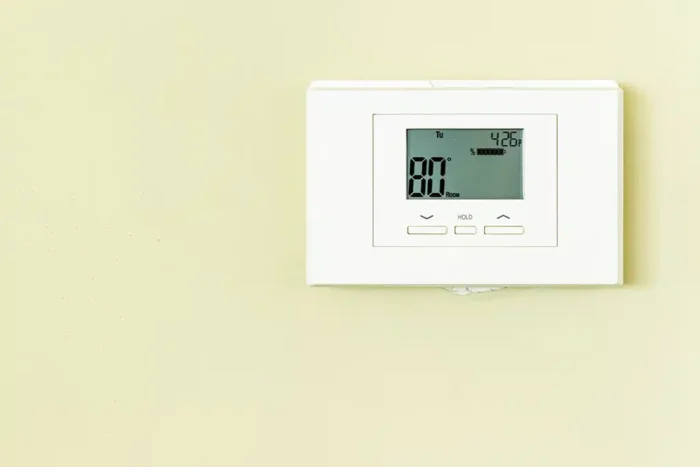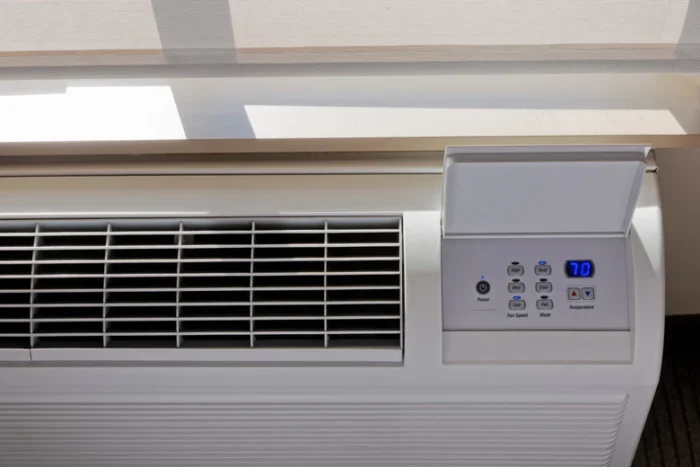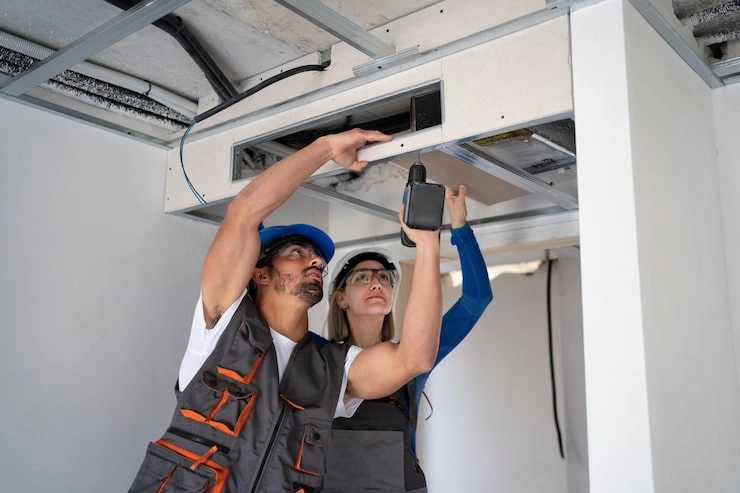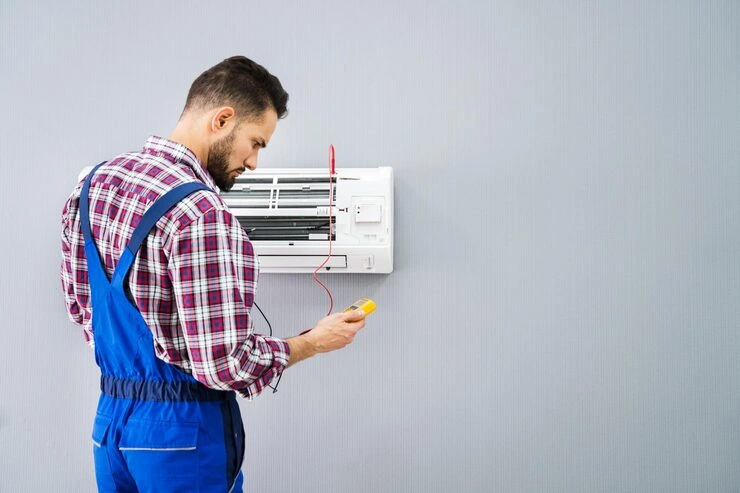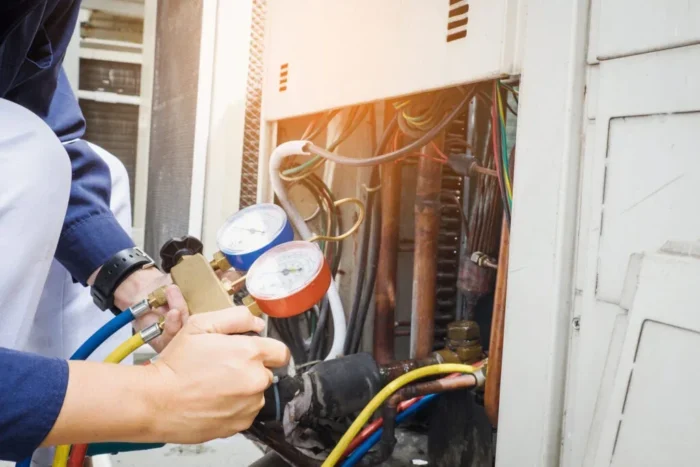How to clean AC drain line is one of the most important maintenance tasks to keep your cooling system running smoothly. A clogged or dirty air conditioner water drain can cause leaks, reduce efficiency, and even lead to costly damage over time. Regularly cleaning AC drain line helps prevent mold growth, water buildup, and unexpected breakdowns. In this guide, we’ll walk you through simple steps to keep your AC drain line clear, avoid clogs, and extend the life of your system.
What is an AC Drain Line?
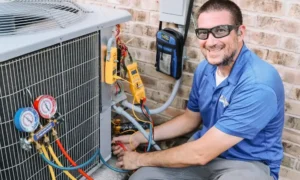
An AC drain line is a small pipe that removes the condensation produced by your air conditioner. As your system cools the air, moisture collects on the evaporator coils and needs a way to escape. The drain line directs this water outside your home through the air conditioner water drain system.
Keeping the AC drain line clean is important because clogs can cause water leaks, mold growth, and reduced efficiency. A clear drain line ensures your unit works smoothly and helps maintain healthy indoor air quality.
Signs of a Clogged AC Drain Line
A clogged AC drain line can cause water damage, mold growth, and system shutdowns if left untreated. Spotting the warning signs early helps you fix the problem before it worsens.
1. Water Pooling Near the Unit
If you notice water collecting around your indoor AC unit, it may mean the drain line is blocked.
2. Musty Odors or Mold Growth
A clogged drain traps moisture, creating the perfect environment for mold and mildew. This can cause unpleasant smells and poor air quality.
3. AC Shutting Down Unexpectedly
Many modern systems have a safety switch that turns off the AC when the condensate drain line is blocked to prevent water damage.
What Causes a Clogged AC Condensate Drain Line?
A clogged AC condensate drain line is usually the result of dirt, moisture, and neglect building up over time. Understanding these causes makes cleaning AC drain line easier and helps prevent future blockages.
1. Dirt, Dust, and Debris Buildup
When dust and dirt pass through the system, they can collect inside the drain pipe. Over time, this buildup restricts water flow and causes clogs.
2. Algae and Mold Growth Inside the Pipe
Moisture inside the AC drain line creates the perfect environment for algae and mold. Without cleaning AC drain line regularly, these growths can block the pipe completely.
3. Lack of Routine Maintenance
Skipping regular AC maintenance allows small blockages to grow into major clogs. A simple schedule of cleaning AC drain line prevents costly repairs and keeps your system running smoothly. For affordable ac repair services in Temecula and Murrieta contact Hutchinson Heating and Air.
How to Clean AC Drain Line in Six Easy Steps
Cleaning air conditioner drain lines may sound complicated, but it’s a simple task you can do at home with basic tools. A clear air conditioner water drain prevents leaks, mold, and costly damage. Follow these six easy steps:
Step 1: Turn Off Your AC System
Before starting, switch off your air conditioner at the thermostat and breaker. This keeps you safe while working on the air conditioner water drain.
Step 2: Locate the Drain Line Access Point
Find the access point, usually a T-shaped vent near the indoor unit. This is where you’ll begin cleaning air conditioner drain pipes.
Step 3: Use a Wet/Dry Vacuum to Remove Blockage
Attach a wet/dry vacuum to the end of the drain line outside your home. Run it for a few minutes to suck out dirt, algae, or debris clogging the pipe.
Step 4: Flush with Cleaning Solution
Pour a cup of vinegar or a mild bleach solution into the access point. This disinfects the air conditioner water drain and kills mold or bacteria inside.
Step 5: Rinse and Check Water Flow
After 30 minutes, flush the line with warm water. Watch the flow outside to make sure it’s running freely. If the water drains smoothly, your line is clear.
Step 6: Restart and Test Your AC System
Turn your AC system back on and let it run for a few minutes. Check around the unit to ensure there are no leaks and the air conditioner water drain is working properly.
You may read How To Clean Ac Filter?
How to Clean an AC Drain Line with Vinegar or Bleach
Keeping the line clear is one of the easiest ways to avoid leaks and water damage. Two of the most common cleaning solutions are vinegar and bleach. Both work, but they serve different purposes and should be used with care.
Benefits of Vinegar
Vinegar is the safest and most recommended option. It’s natural, non-toxic, and won’t harm your pipes or your home’s air quality. A regular flush with vinegar helps break down minor clogs, slow the growth of algae, and keep the system fresh. Since vinegar doesn’t produce harmful fumes, it’s safe to use monthly as part of routine care.
When to Use Bleach
Bleach is stronger and highly effective at killing mold, mildew, and bacteria inside the line. It’s best used when there’s a heavy buildup or when the system hasn’t been cleaned in a long time. However, bleach can release strong odors and, if used too often, may weaken PVC pipes over time. Because of this, most HVAC professionals recommend using bleach sparingly—no more than once or twice a year.
Step-by-Step Guide
- Turn Off the System – Always shut off power to the unit before pouring any solution.
- Open the Access Point – Locate the small cap or T-shaped vent near the indoor unit.
- Pour the Solution – Use about one cup of vinegar for routine cleaning. For deeper disinfecting, use a diluted bleach solution (one part bleach to three parts water).
- Let It Sit – Give the solution 20–30 minutes to work inside the pipe. This allows it to break down buildup and disinfect the line.
- Flush with Water – After waiting, pour warm water into the line to rinse out loosened debris. Watch the exit outside your home to confirm a clear flow.
- Repeat as Needed – Use vinegar once a month for prevention, and bleach only occasionally for stubborn blockages.
Conclusion
Knowing how to clean AC drain line helps you avoid leaks, mold, and costly repairs. Routine maintenance not only keeps your system efficient but also extends its lifespan. For professional help, Hutchinson Heating and Air offers expert AC repair and maintenance services to keep your home cool and worry-free. Don’t wait for clogs to cause damage schedule your service today with Hutchinson Heating and Air.
FAQs
How Often Should I Clean My Ac Drain Line?
It’s best to clean the line once a month using vinegar. This prevents algae, mold, and dirt from clogging the system.
Can I Use Bleach Instead Of Vinegar To Clean The Line?
Yes, but bleach should only be used sparingly once or twice a year since it can damage PVC pipes if overused. Vinegar is safer for regular cleaning.
What Happens If I Don’t Clean My Ac Drain Line?
A clogged line can cause water leaks, mold growth, unpleasant odors, and even system shutdowns if left untreated.
Do I Need Special Tools To Clear The Line?
Not always. You can use household solutions like vinegar and water. For stubborn clogs, a wet/dry vacuum or professional service may be required.
How Do I Know If My Ac Drain Line Is Clogged?
Common signs include water pooling near your unit, musty odors, or your AC shutting off unexpectedly due to safety switches.

